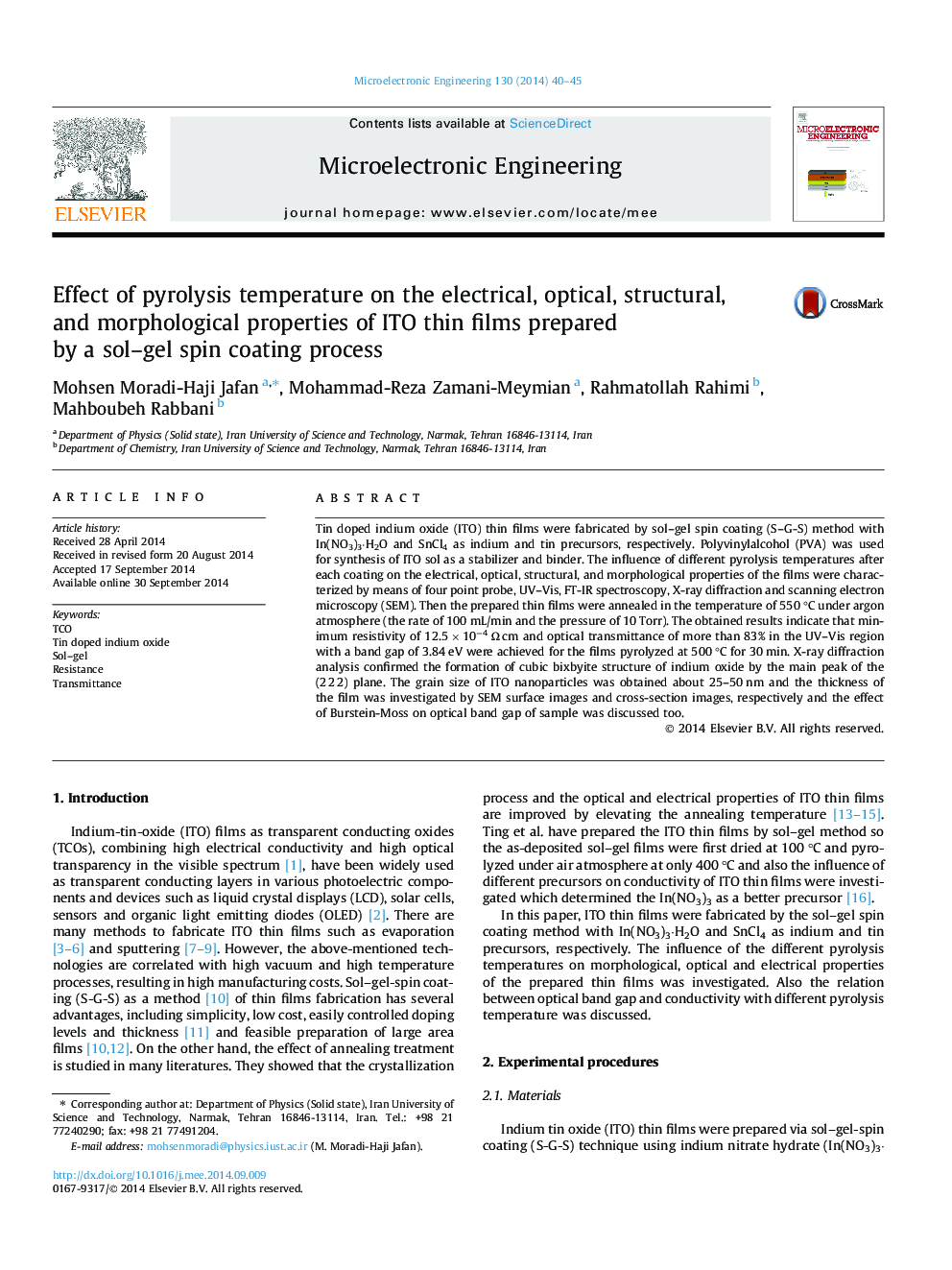| Article ID | Journal | Published Year | Pages | File Type |
|---|---|---|---|---|
| 541244 | Microelectronic Engineering | 2014 | 6 Pages |
•Indium tin oxide thin films were fabricated by the sol–gel spin coating method.•The effects of pyrolysis temperature on optical band gap of ITO were investigated.•The sample pyrolyzed at 500 °C has the lowest sheet resistance and optical band gap.
Tin doped indium oxide (ITO) thin films were fabricated by sol–gel spin coating (S–G-S) method with In(NO3)3·H2O and SnCl4 as indium and tin precursors, respectively. Polyvinylalcohol (PVA) was used for synthesis of ITO sol as a stabilizer and binder. The influence of different pyrolysis temperatures after each coating on the electrical, optical, structural, and morphological properties of the films were characterized by means of four point probe, UV–Vis, FT-IR spectroscopy, X-ray diffraction and scanning electron microscopy (SEM). Then the prepared thin films were annealed in the temperature of 550 °C under argon atmosphere (the rate of 100 mL/min and the pressure of 10 Torr). The obtained results indicate that minimum resistivity of 12.5 × 10−4 Ω cm and optical transmittance of more than 83% in the UV–Vis region with a band gap of 3.84 eV were achieved for the films pyrolyzed at 500 °C for 30 min. X-ray diffraction analysis confirmed the formation of cubic bixbyite structure of indium oxide by the main peak of the (2 2 2) plane. The grain size of ITO nanoparticles was obtained about 25–50 nm and the thickness of the film was investigated by SEM surface images and cross-section images, respectively and the effect of Burstein-Moss on optical band gap of sample was discussed too.
Graphical abstractFigure optionsDownload full-size imageDownload as PowerPoint slide
